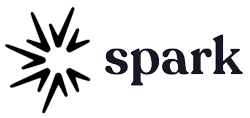The Effective Annual Planning Framework

As the year comes to a close, it’s natural to find ourselves asking, “Where did the time go?” This question echoes a truth about life—that time moves swiftly, and every moment is precious. I recently came across an End of Year Prayer by Wayne Garvey, which, in my view, offers a powerful framework for reflection, repentance, and renewal, reminding us that our days, though fleeting, are filled with opportunities for growth and grace.
For many, the end of the year is synonymous with setting New Year’s resolutions. Yet, these resolutions often fail to last beyond the first few weeks, leaving us discouraged and hesitant to set them again. The key to successful annual planning lies in intentionality—not just in goal setting, but in creating systems and fostering habits of reflection and evaluation.
This article will explore three core components of effective annual planning: Goal Setting, System Building, and Evaluation & Reflection. It will also outline my structured process for reviewing the past year and planning for the year ahead.
1. Goal Setting
Goals are the foundation of personal and professional growth. Effective goal setting begins with aspirations—broad, vision-driven ambitions that define the life we want to build. These aspirations are then broken down into SMART goals that make them actionable and trackable. For instance
- Aspiration: Cultivate a healthier, more balanced lifestyle.
- SMART Goal: Walk 10,000 steps daily for at least five days a week over six months.
When our goals are tied to our core values and long-term vision, they become more meaningful and easier to pursue.
1. Write down your aspirations to maintain focus on the bigger picture.
2. Break aspirations into SMART goals that are actionable and measurable.
3. Periodically revisit your goals to assess progress and make necessary adjustments.
2. System Building
As James Clear puts it, “You do not rise to the level of your goals; you fall to the level of your systems.” One reason people often abandon their resolutions is the lack of systems to support execution. Systems are the repeatable processes, habits, and routines that enable consistent progress. Goals are only as effective as the systems that support them.
For example, to achieve the goal of walking 10,000 steps daily, you might:
- Use a fitness tracker to monitor your activity.
- Set reminders for a morning walk.
- Join a walking group for accountability.
Systems create structure and help bridge the gap between intention and action. Without systems, even the most well-crafted goals falter. Systems don’t need to be overly complex, by designing simple systems tailored to your goals, you cultivate accountability and consistency, the bedrocks of success.
1. Schedule regular review sessions to evaluate and refine your systems.
2. Ensure your systems are sustainable and adaptable to your lifestyle.
3. Evaluation & Reflection
Evaluation and reflection are essential yet often overlooked steps in the planning process. They provide clarity about what worked, what didn’t, and how to move forward. Reflection transforms experiences into learning opportunities, offering insights that drive future success. Without pausing to assess what worked and what didn’t, we risk repeating mistakes. To evaluate your progress, ask reflective questions such as:
- Did I consistently follow my workout routine?
- What obstacles did I encounter, and how can I overcome them next year?
1. Set aside uninterrupted time to review your year and extract lessons learned.
2. Use journaling prompts (questions) like “What worked well? What didn’t?” to gain clarity.
3. Acknowledge achievements, both big and small, to stay motivated.
4. Recognize recurring obstacles or successful habits to refine your approach.
5. Ask trusted peers or mentors for input to uncover blind spots and fresh insights.
Annual Review & Planning Process
In my article “Focusing on the Big Rocks,” I shared how my aspirations, goals, habits, routines, and systems align with my “Big Rocks”—the priorities that matter most in my life. My annual planning process is built around seven interconnected components: Each of these has examples.
Aspirations: Broad, high-level, long-term ambitions for the future.
- Maintain strong family relationships while building a thriving career.
Goals: Granular, SMART ambitions that align with aspirations.
- Complete a professional certification by December.
- Schedule bi-weekly coffee or dinner dates with family members.
Projects: Major initiatives tied to goals and aspirations.
- Organizing a family reunion.
- Launch a podcast series focused on personal development.
Daily Tasks: Micro-deliverables linked to projects and goals.
- Research podcasting platforms.
- Research venues for the family reunion.
Habits & Routines: Practices that create momentum toward goals.
- Write for 30 minutes every morning.
- Journaling gratitude daily to enhance relationship focus.
Events & Celebrations: Milestones to celebrate progress.
- Plan a family trip to celebrate a key achievement.
- Attending a wedding anniversary celebration.
Learning & Resources: Investments in knowledge and growth.
- Read one book per month on leadership.
- Listen to a podcast on communication and relationship building.
Reflection Questions (Hindsight)
Looking back on the year, I ask myself: What was this year like? For each of the seven components, I reflect using specific questions:
- Aspirations: What progress did I make toward my aspirations?
- Goals: Did I achieve my SMART goals? Why or why not?
- Projects: Which projects succeeded? What challenges arose?
- Habits & Routines: Did I adopt or refine habits that supported my goals?
- Events & Celebrations: What special moments enriched my year?
- Learning & Resources: What did I learn, and what resources helped me grow?
- Daily Tasks: How effectively did I prioritize my daily workload?
Planning for the Year Ahead (Foresight)
As I look forward, I ask: What do I want the coming year to look like? I then use the seven components as a guide to plan:
- Aspirations: What broad ambitions will I pursue?
- Goals: What SMART goals will drive progress?
- Projects: What major initiatives will I focus on?
- Daily Tasks: What individual tasks will require attention?
- Habits & Routines: What practices will I adopt or improve?
- Events & Celebrations: What milestones am I looking forward to?
- Learning & Resources: What knowledge and tools will I need?
By integrating Goal Setting, System Building, and Evaluation & Reflection into your annual review and planning process, you can create a framework for success that transcends fleeting resolutions. Approach each year with clarity, intentionality, and purpose—and watch as you grow into the best version of yourself.
A Timely Resource
At the end of every year, I look for ways to improve my productivity. One valuable resource I recommend is Ali Abdaal’s Spark 2025 Productivity Summit, a free online masterclass designed to help participants reflect on what matters most, set meaningful goals, and build systems for consistent action in the year ahead.

You can sign up for Spark 2025 by clicking the button below.

